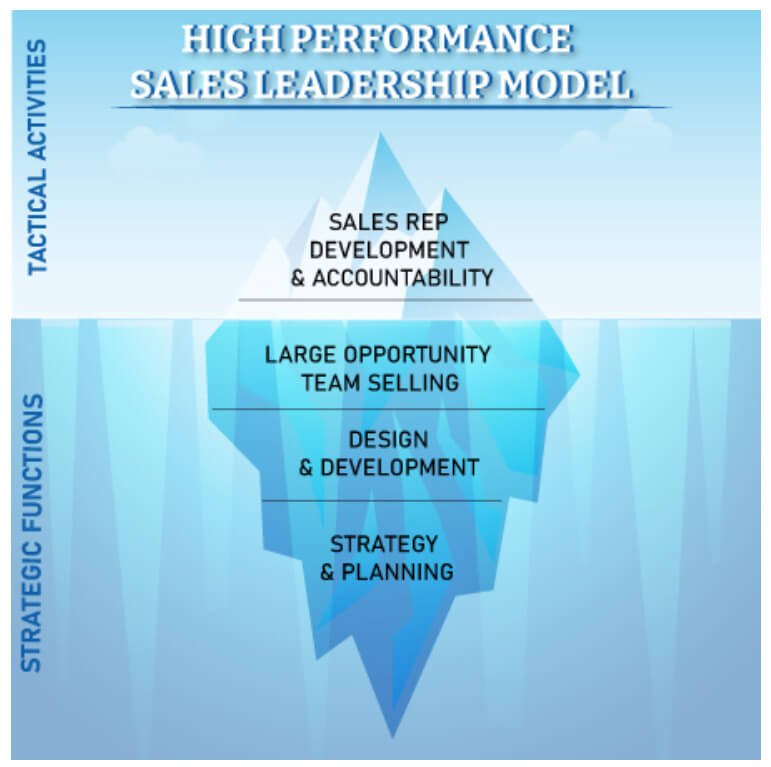It’s no secret that the sales team is an instrumental piece within an organization. That team requires a strong Sales Leader in order to continually deliver on sales goals to keep the company moving forward. But it’s important to keep in mind that while a team member may be a strong salesperson, that doesn’t mean their skills will translate into them being a strong Sales Leader.
As a fractional VP of Sales, I am often referred into client settings when senior leadership wants to take extra care to avoid hiring “the wrong” Sales Leader. These are the times I hear about painful experiences they have gone through when the prior person(s) entrusted proved not to be the right fit and it took several months or even years to recognize it.
Most often, the root cause for this mishap comes from the Top Executive not realizing that it takes a lot more than strong sales skills and a general sales management background to be a high-performing Sales Leader. This can stem from the Owner or CEO’s personal lack of experience with direct selling and/or sales leadership. Without that background, they don’t have a clear picture of the expertise and scope of activities that contribute to developing and operating a high-performance sales organization. Essentially, they only see the tip of the iceberg.
|
Trivia to Stimulate Self-Assessment
What percentage of time does the average
Sales Leader spend on developing their sales staff? a. 9% b. 16% c. 25% d. 35%
Find out the answer at the end of my blog.
|
The Sales Leader’s performance typically has the most direct impact on an organization’s growth success. That’s why it is critically important for senior leadership to have an understanding of the key areas that make up a high-performance sales organization. In smaller business settings, this will help the Owner or President determine if they are equipped to fulfill this role by assessing their skill set and time availability. Whether the person in the Sales Leader seat is the Owner or a dedicated resource, it’s critical to recognize the full breadth of skills and activities that make up a high-performance sales leadership model. When done properly, this pays off tenfold!

My iceberg illustration indicates a combination of tactical activities and strategic functions that both play a key role in the sales leader’s ability to perform at a high level. The difficulty small-to-mid sized businesses face is that it can be impractical to budget for a candidate with this span of skills. The other challenge is attracting and retaining a Sales Leader with full capabilities. Instead, it’s common that these companies staff for the “tip of the iceberg” because those skills are the most understood by senior leadership, fairly easy to source, and executing on these tactical activities requires the largest amount of ongoing time allocation.
To empower senior leadership to take inventory of the skills and activities needed to operate a high-performance sales organization, I’ve developed a Sales Leadership Assessment Tool. In cases when the Sales Leader in place does not embody all the necessary skills, this will help the Top Executive understand the areas worthwhile for a skill development investment. In some cases, it may reveal a more practical solution could be leveraging an Outsourced VP of Sales such as myself to fill the gaps.
help identify gaps that may be hindering your sales growth!
Even when all these skills are covered, it’s also important that the Sales Leader is effective in motivating, inspiring, and building enthusiasm within the sales team. Given the large range of skill and accountability related to the Sales Leader role, many top executives find sourcing and equipping the right candidate a daunting task.
While the Leadership Assessment Tool details out the ideal skills and activities that make up a high-performance sales leadership model, I’d also like to share some key symptoms that are good indicators that something under the surface, in the lower half of the iceberg, needs attention.

- Deals drag on too long (they get hung-up in the pipeline)
- Difficulty competing on value and resorting to leading with price
- No defined, repeatable, proactive sales effort – your customers are finding you
- Low proposal-to-close conversion rate
- High sales rep turn-over (from termination or resignation)
Getting the right person in the right seat and properly equipping the resource is something that is important across the board for any business. One of the most critical roles is the Sales Leader position. Not every person with a sales background would make a good sales leader, and that’s okay. By taking the time to evaluate the skills a person has, as well as the ability to recognize some critical warning signs, your Sales Leader and Team will flourish and be able to move your business forward.
LEVERAGE ME AS A RESOURCE TO FORMULATE YOUR NEXT STEPS.
|
TRIVIA ANSWER
The average Sales Leader is only able todevote approximately 9%
of their work week to developing staff.* Studies show that this is far below what is needed to maintain a high-performing team. Review my blog article on this page to understand why. *Source: Gartner study, Sales managers struggle to meet expectations
|







Leave A Comment